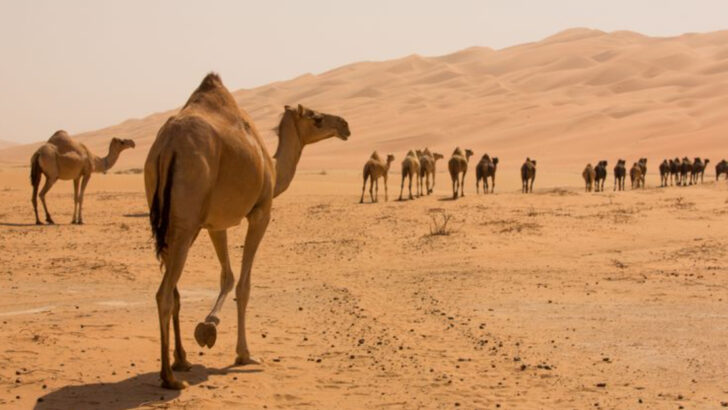The summer sun can be brutal, but these 18 animals laugh in the face of scorching heat. From deserts to savannas, they’ve cracked the code to survive—and even thrive—when temperatures soar. With giant ears that act like natural air conditioners, underground hideouts cooler than any shade, and clever tricks to stay hydrated, these creatures show us the true power of adaptation. They don’t just endure the heat; they master it, turning harsh conditions into their playground. Get ready to meet nature’s coolest heat survivors—each one a marvel of survival and style under the blazing sun. Their secrets might just inspire you to rethink what it means to beat the heat this summer!
Fennec Fox
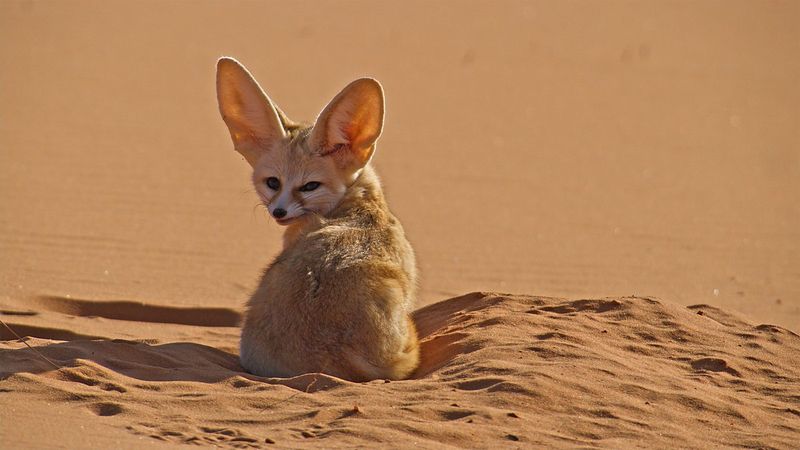
With ears nearly half its body size, the fennec fox is the quintessential desert survivor. These large auditory appendages are not just for hearing; they dissipate body heat, keeping the fox cool under the blazing sun. Living in the Sahara Desert, fennec foxes have adapted to extreme temperatures. Their fur reflects sunlight, and their feet are fur-covered to protect against hot sand.
These nocturnal creatures avoid daytime heat by burrowing underground, where it’s cooler. The fennec fox’s ability to thrive in such a harsh environment makes it a true marvel of nature.
Desert Tortoise
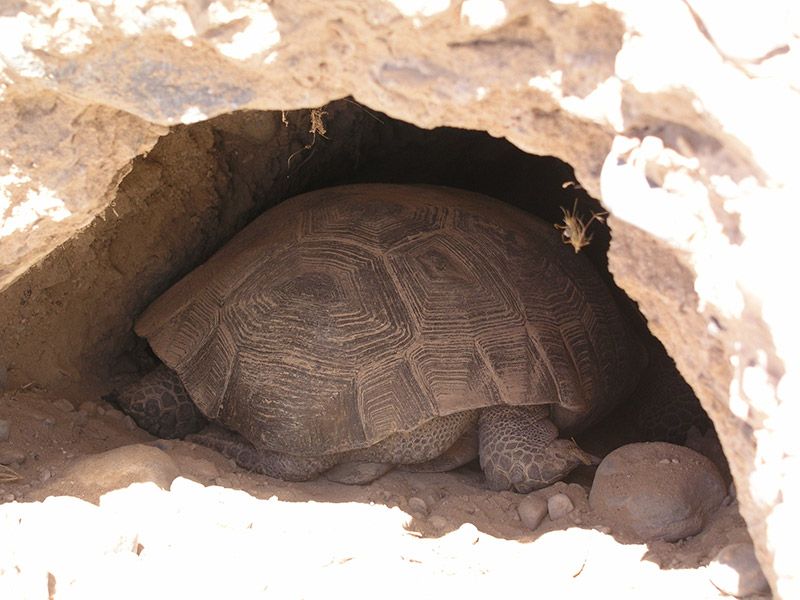
The desert tortoise is a master of patience and endurance. To escape the unbearable heat, this reptile digs extensive burrows, retreating into the cool underground. These burrows can be up to 30 feet long and provide shelter from temperatures that soar above 100°F.
With a lifespan of up to 50 years, the desert tortoise conserves water by urinating infrequently, maintaining hydration. Its diet of wildflowers, grasses, and cacti supplies the necessary moisture. This slow-moving creature’s survival strategy is a testament to adaptation and resilience in the face of the relentless summer sun.
Meerkat
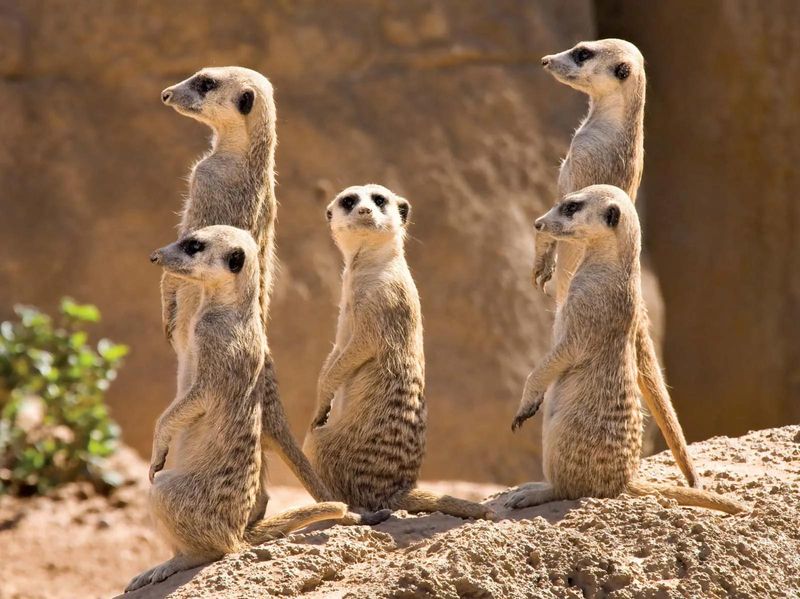
Meerkats, the charming sentinels of the African savannah, have a knack for staying cool. Their social structure allows them to take turns as lookouts, ensuring safety while others forage. By being active during cooler parts of the day and staying in the shade, meerkats avoid the harsh midday sun.
Their dark eyes reduce glare, and their burrow systems provide respite from the heat. Meerkats have adapted to detect predators swiftly, relying on teamwork and communication to thrive. These playful creatures showcase a unique blend of social cooperation and environmental adaptation.
Camel

Camels are the ships of the desert, perfectly designed for life in extreme heat. Their humps store fat, not water, allowing them to survive without food for weeks. This adaptation helps camels endure long journeys across arid landscapes.
Camels can drink up to 40 gallons of water in one go, rehydrating quickly. Their ability to tolerate dehydration is unparalleled, surviving even when losing 25% of their body weight in water. With specially adapted noses and long eyelashes, camels reduce water loss and protect against sand and sun, making them true desert survivors.
Gila Monster
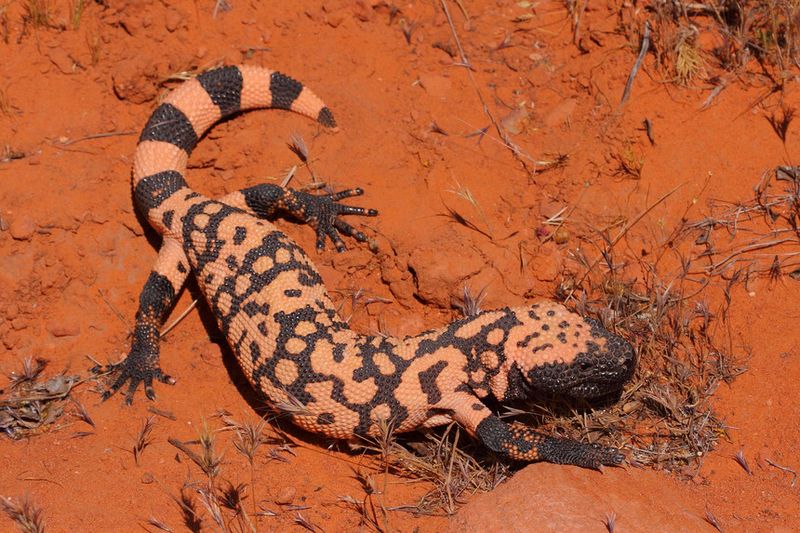
The Gila monster, a venomous lizard, is a master of energy conservation. Native to the southwestern United States, it slows its metabolism during scorching summers. This adaptation allows it to go months without eating, surviving on stored fat.
Gila monsters avoid daytime heat by staying in burrows, emerging during cooler periods. Their unique beaded skin helps minimize water loss. Though their bite is painful, Gila monsters are generally docile. They symbolize survival and adaptability, thriving in an environment where few creatures dare to dwell.
Roadrunner
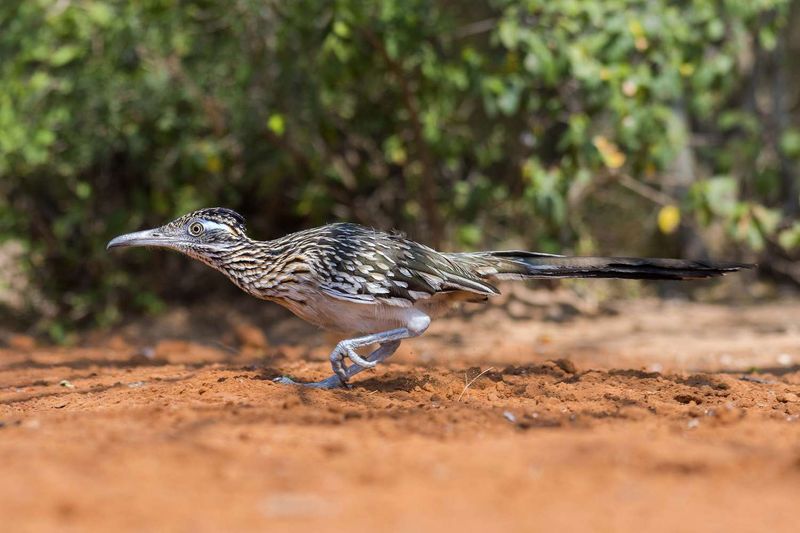
Beep beep! The roadrunner isn’t just a cartoon character; it’s a real-life speed demon. Found in North America’s deserts, this bird races across the sand, reaching speeds of 20 mph. This swiftness helps avoid predators and the hottest part of the day.
Roadrunners are opportunistic feeders, eating insects and small reptiles. Their nasal glands excrete excess salt, conserving water. Known for their distinctive crest and long tail, roadrunners are iconic symbols of survival in arid lands. Their adaptability and speed make them fascinating desert dwellers.
Kangaroo Rat
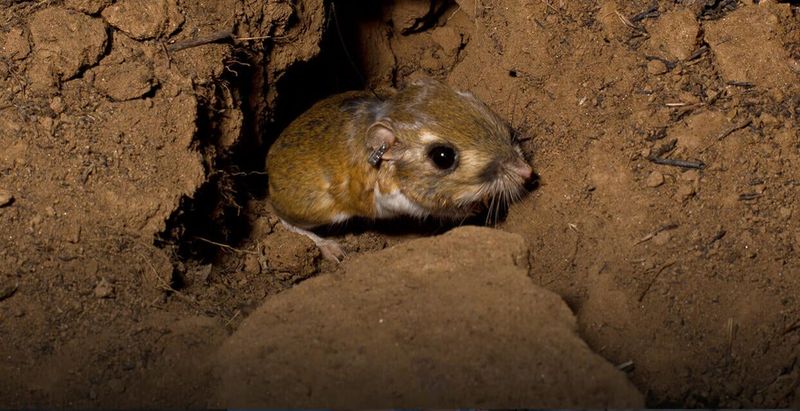
The kangaroo rat, a nocturnal desert dweller, is a marvel of hydration management. It gains moisture primarily from the seeds it eats, seldom needing to drink water. Its kidneys are incredibly efficient, reducing water loss.
By being active at night, the kangaroo rat avoids the scorching sun. It hops on its hind legs, resembling a kangaroo, to escape predators quickly. Its cheek pouches store food, allowing it to forage rapidly. This small rodent’s life is a testament to survival in one of the harshest climates on Earth.
African Elephant
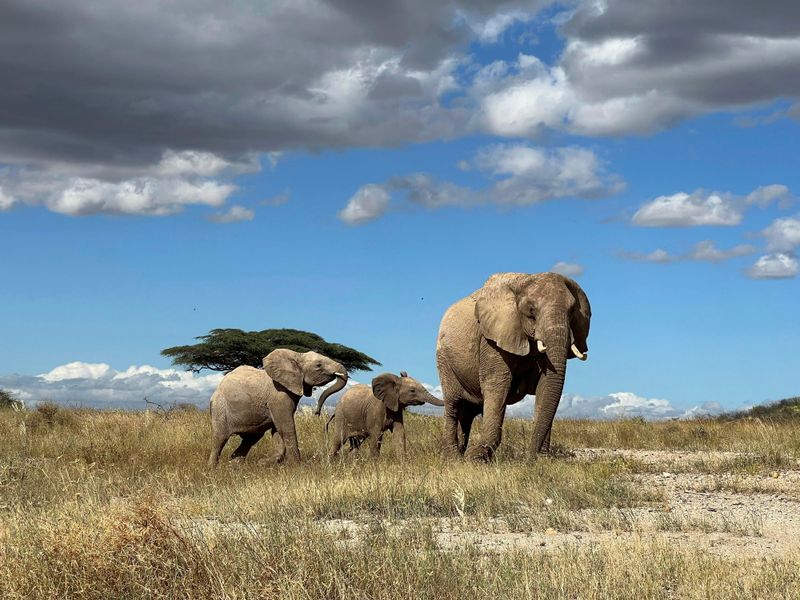
Majestic and intelligent, the African elephant uses its massive ears to regulate body temperature. As it flaps its ears, blood vessels cool, reducing body heat. This adaptation is crucial for survival in hot African climates.
African elephants also cover themselves with mud and water, using their trunks as tools to keep cool. Their social behavior and memory make them fascinating creatures to observe. These gentle giants, despite their size, show remarkable adaptability to the unforgiving summer heat of the savannah.
Horned Lizard
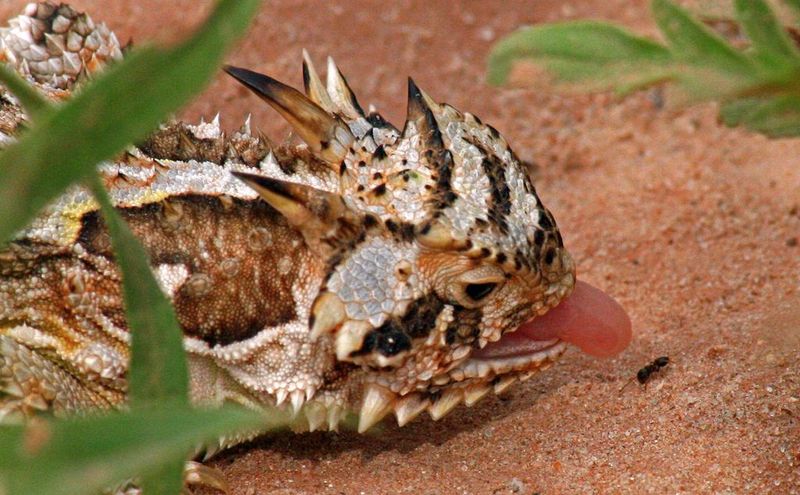
The horned lizard, often called the “horny toad,” is a quirky reptile with a unique defense mechanism. It can squirt blood from its eyes to deter predators. This adaptation, while startling, is effective in the desert’s harsh environment.
Horned lizards bask in the sun to elevate their body temperature, then retreat to cooler areas as needed. Their camouflaged skin provides protection from predators. These lizards are emblematic of the desert’s rugged and resilient inhabitants, displaying a blend of peculiar charm and survival prowess.
Thorny Devil
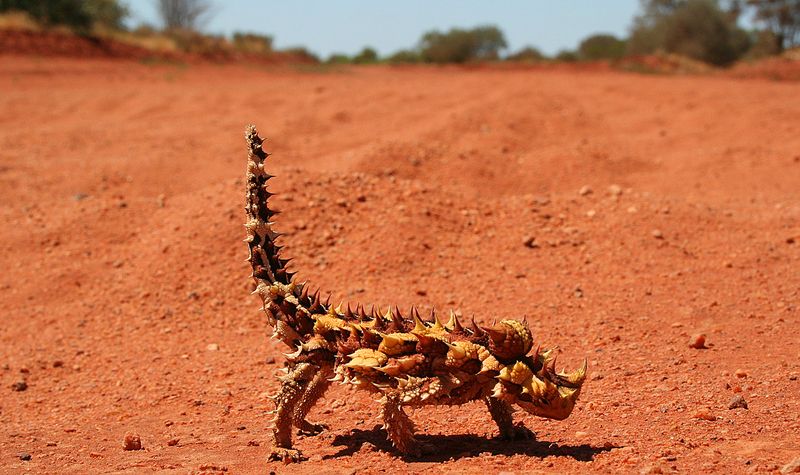
The thorny devil, an intriguing Australian lizard, is a master of moisture collection. Its spiky skin channels dew and rainwater directly to its mouth. This adaptation allows the thorny devil to thrive in arid regions with little rainfall.
Despite its intimidating appearance, this reptile is harmless and feeds mainly on ants. It changes color to regulate body temperature, becoming darker to absorb heat and lighter to deflect it. The thorny devil’s survival strategy is a testament to nature’s ingenuity in overcoming environmental challenges.
Jackrabbit
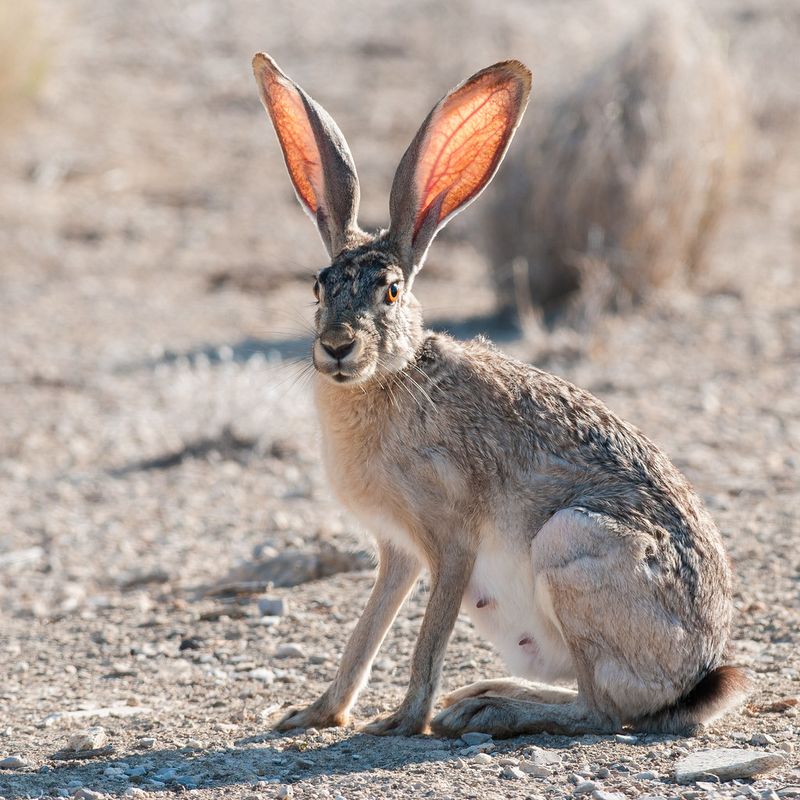
Jackrabbits, with their long ears, are desert dwellers known for heat dissipation. These large ears act like radiators, releasing excess body heat into the air. This adaptation enables jackrabbits to stay active even during sweltering days.
Their powerful hind legs allow them to leap great distances, escaping predators efficiently. Jackrabbits’ diet consists of shrubs and grasses, providing necessary hydration. Their ability to thrive in extreme temperatures makes them agile and resilient creatures of the desert.
Monitor Lizard
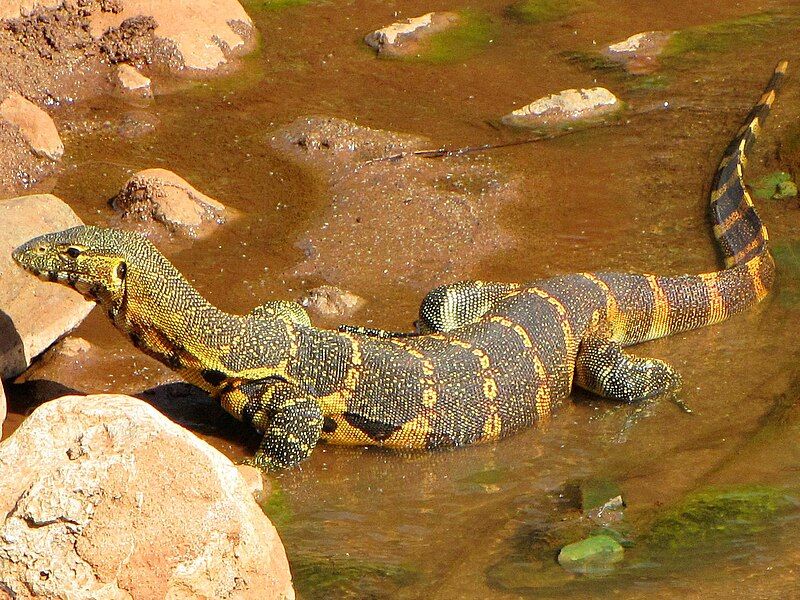
Monitor lizards, with their keen intelligence and adaptability, thrive in various habitats, including tropical forests and arid deserts. These reptiles bask in the sun to regulate their body temperature, but seek cooler spots when the heat becomes intense.
Known for their strong limbs and sharp claws, monitor lizards are skilled hunters, feeding on insects, birds, and small mammals. Their forked tongues help them sense prey. Monitor lizards epitomize resilience and adaptability in the face of diverse environmental challenges.
Desert Iguana
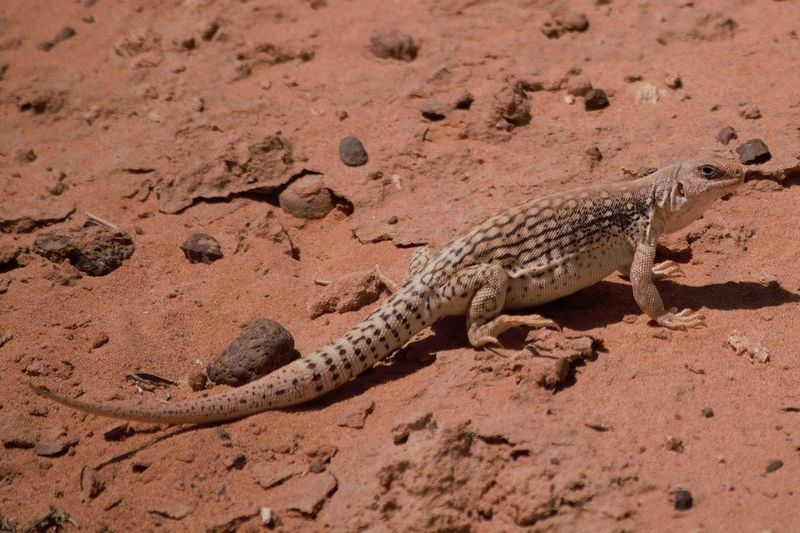
The desert iguana, a sun-loving reptile, thrives in some of the hottest environments. Active at extreme temperatures, this iguana basks in the sun, elevating its body heat to near 110°F.
Its light coloration reflects sunlight, and its burrowing habit provides a cool retreat. Feeding on desert plants, the desert iguana has adapted to obtain moisture from its diet. This ability to endure and flourish in such harsh conditions makes the desert iguana a fascinating example of evolutionary adaptation.
Scorpion
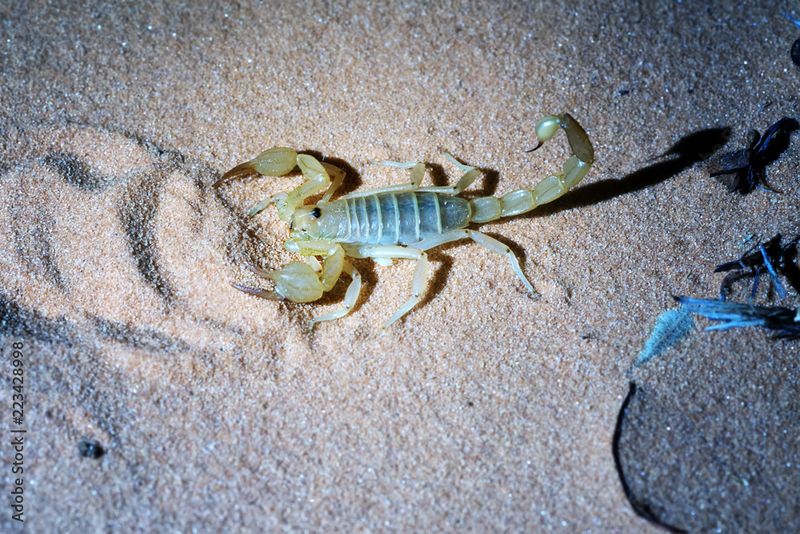
Scorpions, with their menacing tails, are nocturnal predators that escape the sun by being active at night. This adaptation helps them conserve water and energy during the day’s heat.
With a diet of insects and spiders, scorpions play a crucial role in controlling pest populations. Their exoskeletons provide protection and minimize water loss. Despite their fearsome appearance, scorpions are vital to the desert ecosystem, showcasing remarkable survival tactics in an unforgiving environment.
Saharan Silver Ant
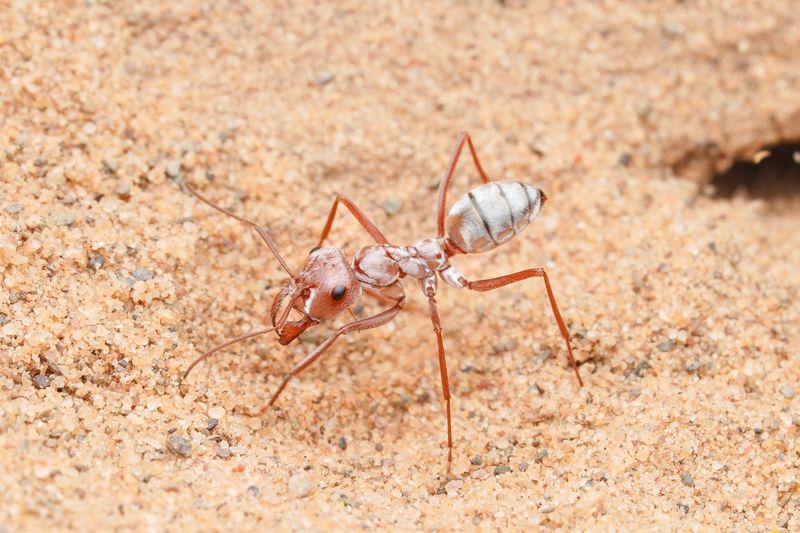
The Saharan silver ant, a tiny yet resilient creature, is known for its unique adaptation to extreme heat. These ants forage during the hottest part of the day, when predators are scarce.
Their metallic silver bodies reflect sunlight, protecting them from lethal temperatures. With long legs, they minimize contact with the hot desert surface. This fascinating survival strategy allows them to thrive in one of the Earth’s most inhospitable environments, making them a true marvel of nature.
Sandgrouse
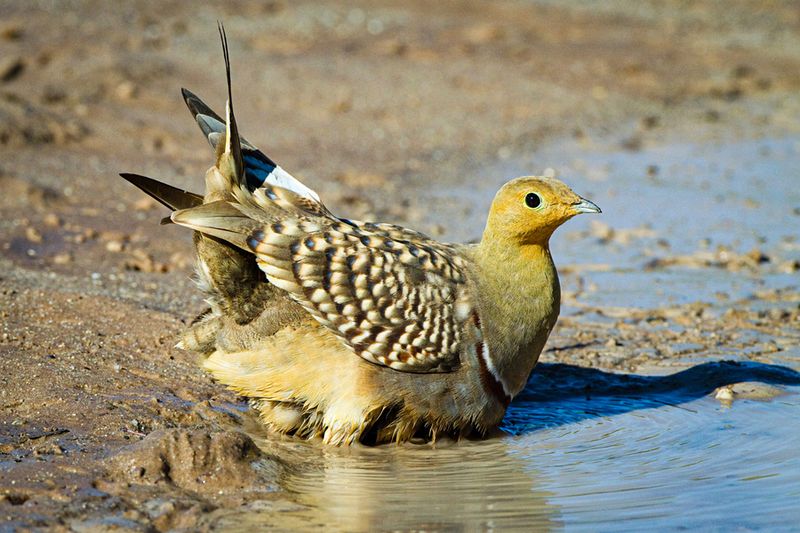
Sandgrouse, birds of the desert, have a remarkable way of transporting water. Their belly feathers soak up water, allowing them to carry it back to their chicks. This adaptation is crucial for survival in arid regions.
With swift, direct flights, sandgrouse travel long distances between water sources. Their plumage provides effective camouflage against predators. Sandgrouse are extraordinary examples of adaptability, using ingenious methods to sustain life in harsh climates.
Coyote
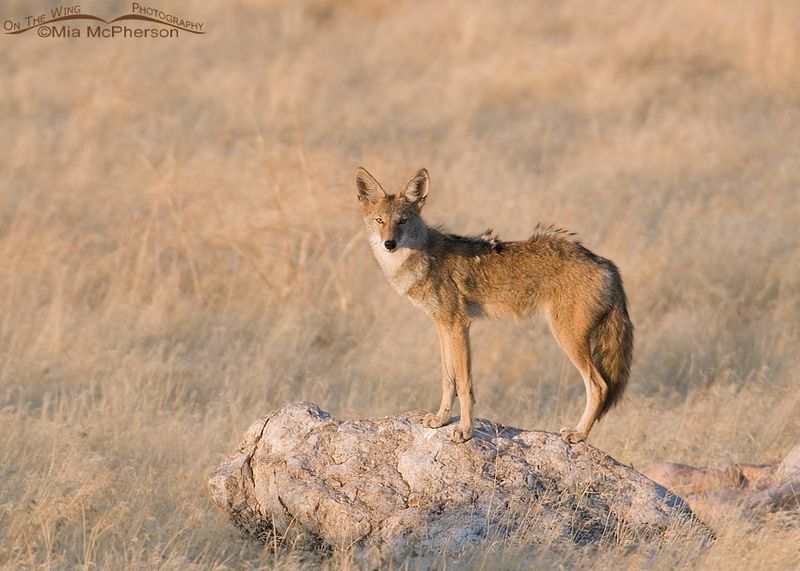
Coyotes, versatile and cunning, adapt to a wide range of temperatures. Their thick fur insulates against both heat and cold, allowing them to inhabit diverse environments.
Coyotes are often seen hunting in packs, using teamwork to capture prey. Their keen senses and intelligence make them skilled survivors. In the desert, coyotes are active during cooler hours, resting in the shade during midday. These adaptable canines embody resilience and ingenuity, thriving where few others can.
Hornbill
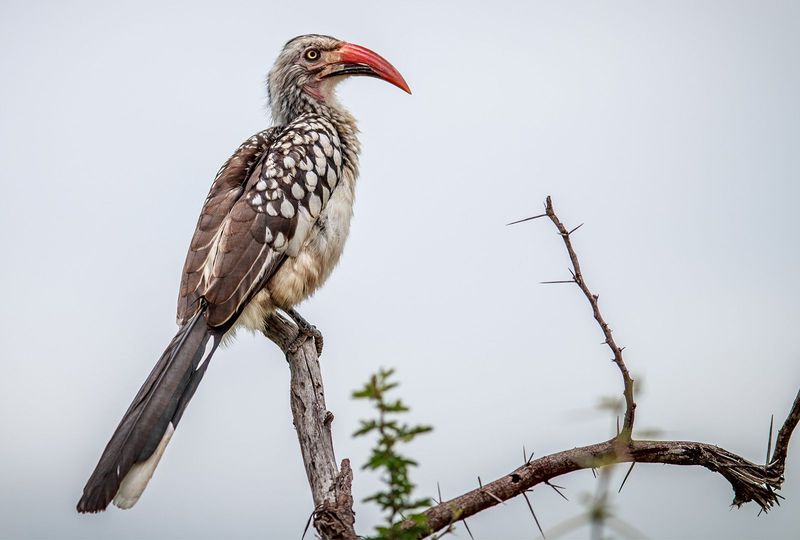
Hornbills, with their striking beaks and vibrant feathers, are tropical birds that have adapted to stay cool in hot environments. They are usually active during the cooler parts of the day, finding shelter in thick foliage to avoid the heat.
Their casque, or helmet-like structure on top of the beak, plays a role in temperature regulation. Hornbills are known for their interesting nesting behavior, sealing the female and eggs inside a tree cavity with mud. These birds are a captivating example of adaptability and parenting in the wild.

